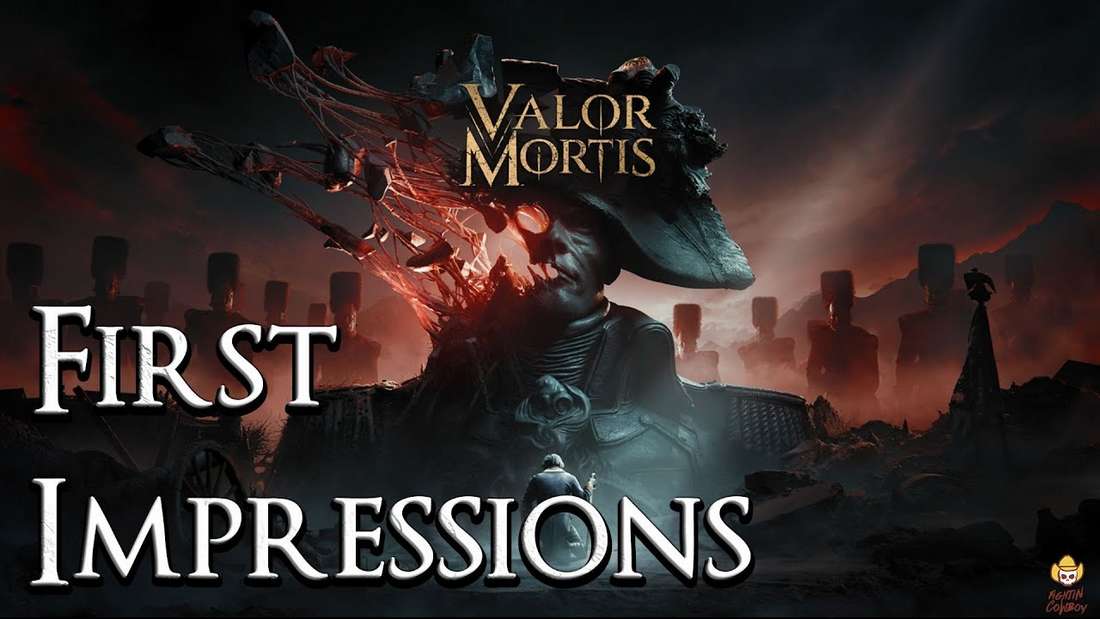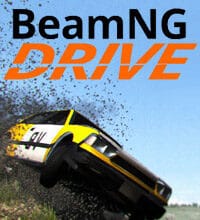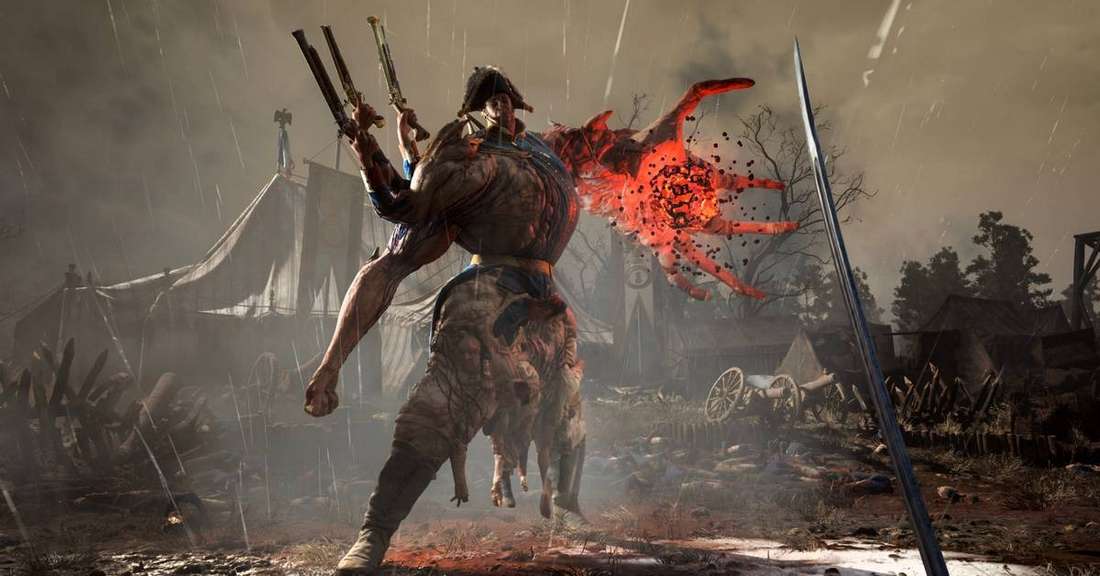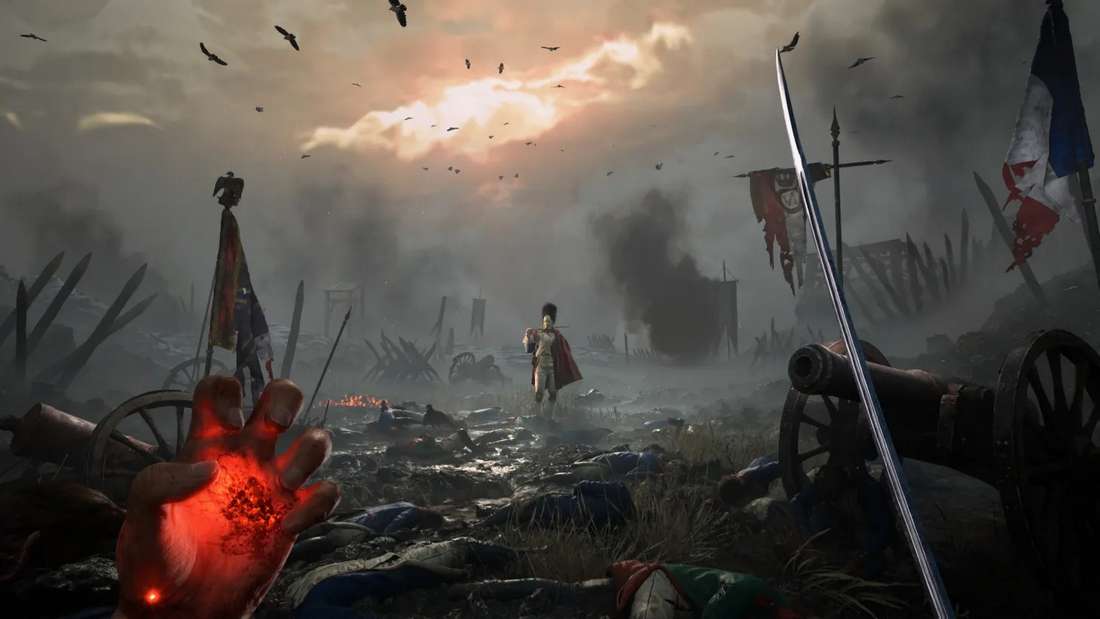Valor Mortis: The First-Person Soulslike That Rules—A Bold New Era for Action-RPGs from the Ghostrunner Developers
Popular Now
 Grand Theft Auto V
Grand Theft Auto V
 Candy Crush Saga
Candy Crush Saga
 Fall Guys
Fall Guys
 CarX Street
CarX Street
 Brawl Stars
Brawl Stars
 Roblox
Roblox
 League of Legends
League of Legends
 Among Us
Among Us
 Auto X Drift Racing 3
Auto X Drift Racing 3
 Free Fire
Free Fire 
The gaming landscape is constantly evolving, but few studios dare to fundamentally re-engineer an established genre. One More Level, the visionary team behind the critically acclaimed high-speed slasher Ghostrunner, has done exactly that. Their newest project, Valor Mortis, is not merely another Soulslike clone; it is a visceral, first-person action-RPG that thrusts players into a nightmarish, plague-torn alternate-history of the Napoleonic Wars. With a planned release in 2026, the recent pre-alpha playtests have confirmed one thing: this game is setting a new standard for the genre, combining punishing difficulty with exhilarating close-quarters combat.
The core concept is a gamble. The Soulslike genre is almost universally defined by a third-person perspective, which offers superior spatial awareness and a clear view of your character’s animations—both vital for the genre’s signature precise combat. Valor Mortis shatters this convention by adopting the first-person view mastered in Ghostrunner. This shift isn’t a gimmick; it completely overhauls the experience, making every parry, dodge, and visceral finisher feel more immediate, terrifying, and personal.
 Unveiling the Setting: A Napoleonic Nightmare
Unveiling the Setting: A Napoleonic Nightmare
The game places you in the boots of William, a resurrected soldier of Napoleon’s Grande Armée. You awaken in a mass grave, immediately confronted by a Europe ravaged by a mysterious, corrupting plague. This is a dark fantasy setting steeped in historical horror, where the grandiosity of the 19th-century military clashes with grotesque, plague-ridden abominations. The narrative is a compelling blend of reality and the supernatural, promising to unravel a horrid conspiracy tied to your unholy resurrection.
- Alternate History: The familiar setting of the Napoleonic era is warped by a pervasive, necrotic infection.
- Environmental Storytelling: Like the best Soulslikes, the environment itself tells a story, littered with the bodies of the fallen and secrets waiting to be uncovered.
- High-CPC Keywords: The setting supports high-value search terms like “historical dark fantasy RPG,” “Napoleonic Wars video game,” and “supernatural action adventure.”
First-Person Combat Reimagined: Precision and Aggression
The first-person combat system is the undisputed centerpiece of Valor Mortis. While it adheres to the core Soulslike mechanics—stamina management, precise parrying, and punishing enemies—the perspective demands a completely different approach from the player. It is less about careful observation from a distance and more about aggressive, reactive engagement where split-second timing is essential.
Strong parry mechanics are heavily incentivized. A successful parry often staggers the enemy, opening them up for a devastating riposte or a fatal execution, giving the combat a rhythmic, Sekiro-like feel. Unlike many Soulslikes where blocking is a viable strategy, Valor Mortis encourages players to master the art of the perfect parry and quick dodge, reflecting One More Level’s expertise in fast-paced action.
- Weapons and Power: Players wield a saber for melee and a flintlock pistol for ranged attacks, which can be manually aimed to target enemy weak points. This dual-wielding setup is reminiscent of titles like Dishonored, offering tactical depth.
- The Corruption Mechanic: Death is not the end; it is a path to power. William harnesses the corrupting plague pulsing through his veins, allowing him to unlock powerful supernatural abilities and enhance attacks.
- Traversal Elements: True to their roots, One More Level has integrated fluid movement and parkour-platforming sections, adding a layer of agility and speed that is rare for the genre and keeps the momentum high.
 Beyond the Blade: Design and Progression
Beyond the Blade: Design and Progression
The developers have been careful to implement SEO-friendly progression systems that will resonate with genre fans and new players alike. The classic bonfire-style checkpoints (here called ‘Lanterns’) are present, enemies respawn, and the familiar high-stakes risk-reward of retrieving lost resources is central to the gameplay loop.
Level design in Valor Mortis is described as having a Metroidvania-inspired structure. This non-linear approach encourages exploration and rewards players who delve into every dark corner of the plague-torn battlefields, reinforcing the value of player investment. Furthermore, the progression features a detailed skill tree and upgrade system where players use gathered ‘Catalysts’ (the game’s currency) to improve stats like health, stamina, and parry capabilities. This customization ensures that the challenging difficulty is balanced by a feeling of continuous, meaningful growth.
Initial Reception: A Glimpse of Greatness
Feedback from the recent pre-alpha playtests has been overwhelmingly positive, despite the game being far from its 2026 release date. Reviewers are highlighting the game’s bold design choices, stating that the first-person perspective transforms the traditional Soulslike formula into a fresh, immersive experience that feels like “BioShock Meets Dark Souls.” While some early builds showed a need for combat tuning and refinement—a common issue in pre-alpha builds—the fundamental concept and its execution are already drawing immense praise.
Valor Mortis is poised to be a major player in the high-difficulty action-RPG space. It successfully fuses the fast-paced, visceral energy of the Ghostrunner series with the methodical, demanding combat of a Soulslike. For fans looking for a genuine evolution of the genre—one that offers intense first-person melee combat and a dark, compelling narrative—Valor Mortis is, without a doubt, a title to watch. The bold move to first-person rules, offering a truly unique and terrifying perspective on the well-trodden path of death and rebirth.










 Unveiling the Setting: A Napoleonic Nightmare
Unveiling the Setting: A Napoleonic Nightmare Beyond the Blade: Design and Progression
Beyond the Blade: Design and Progression